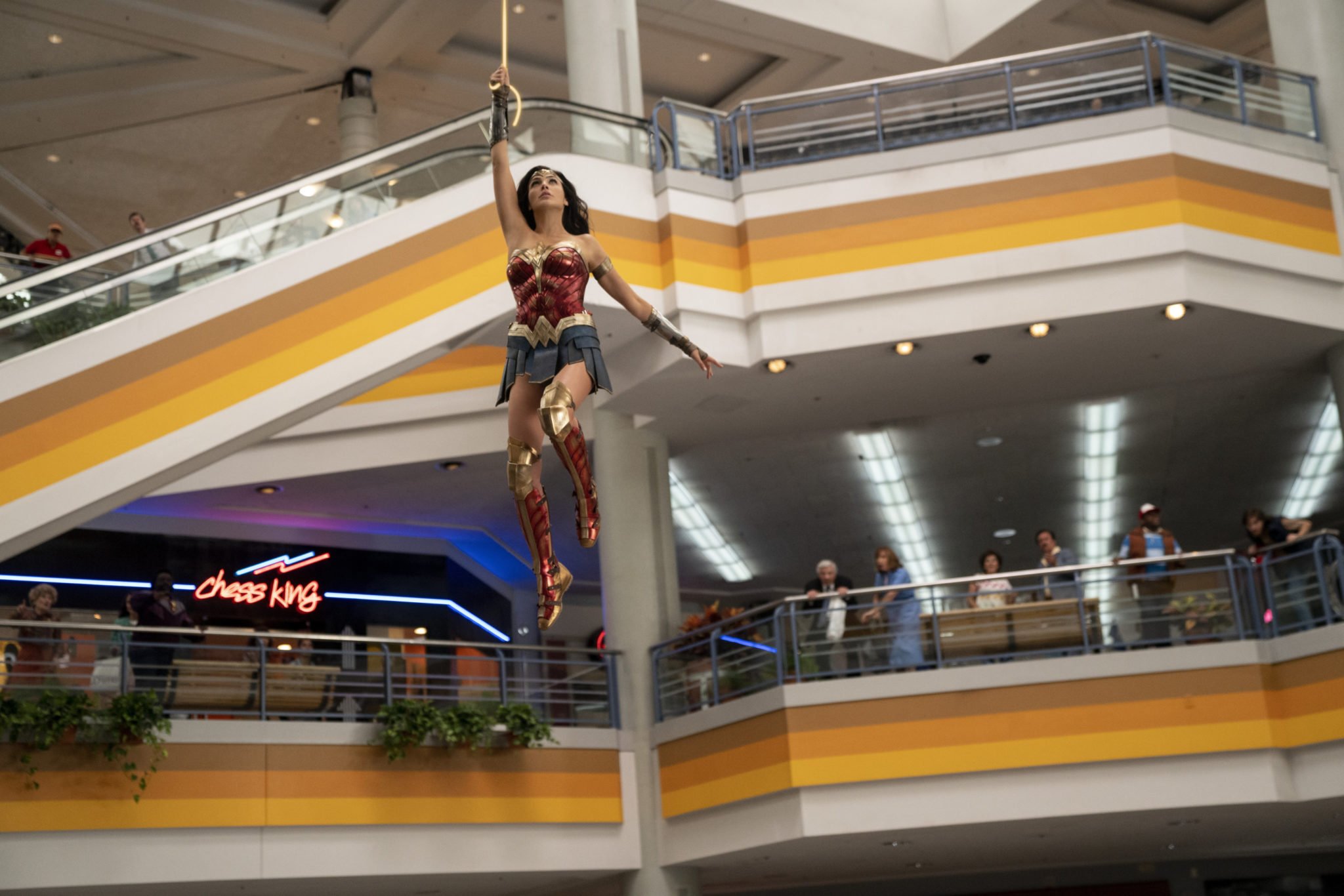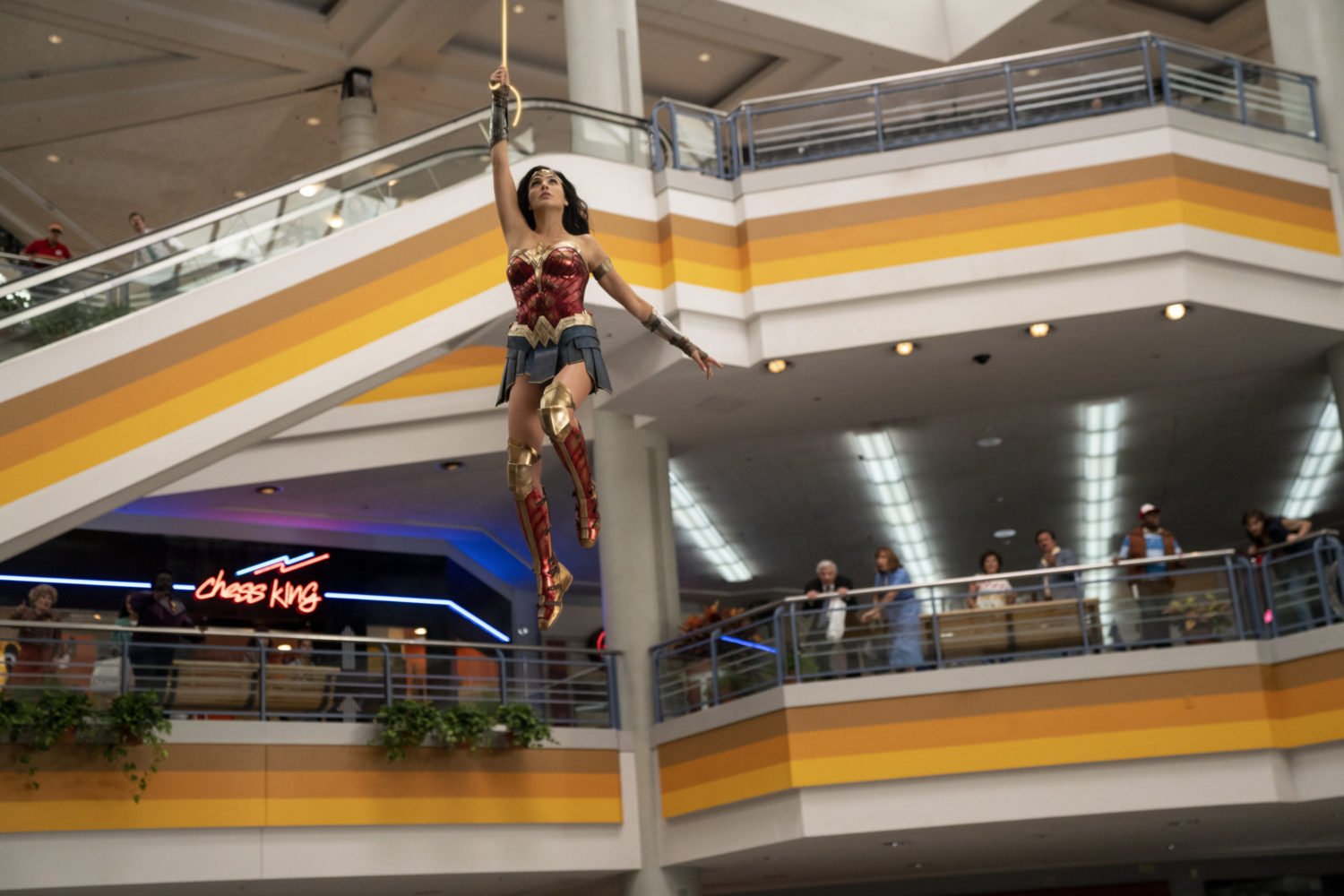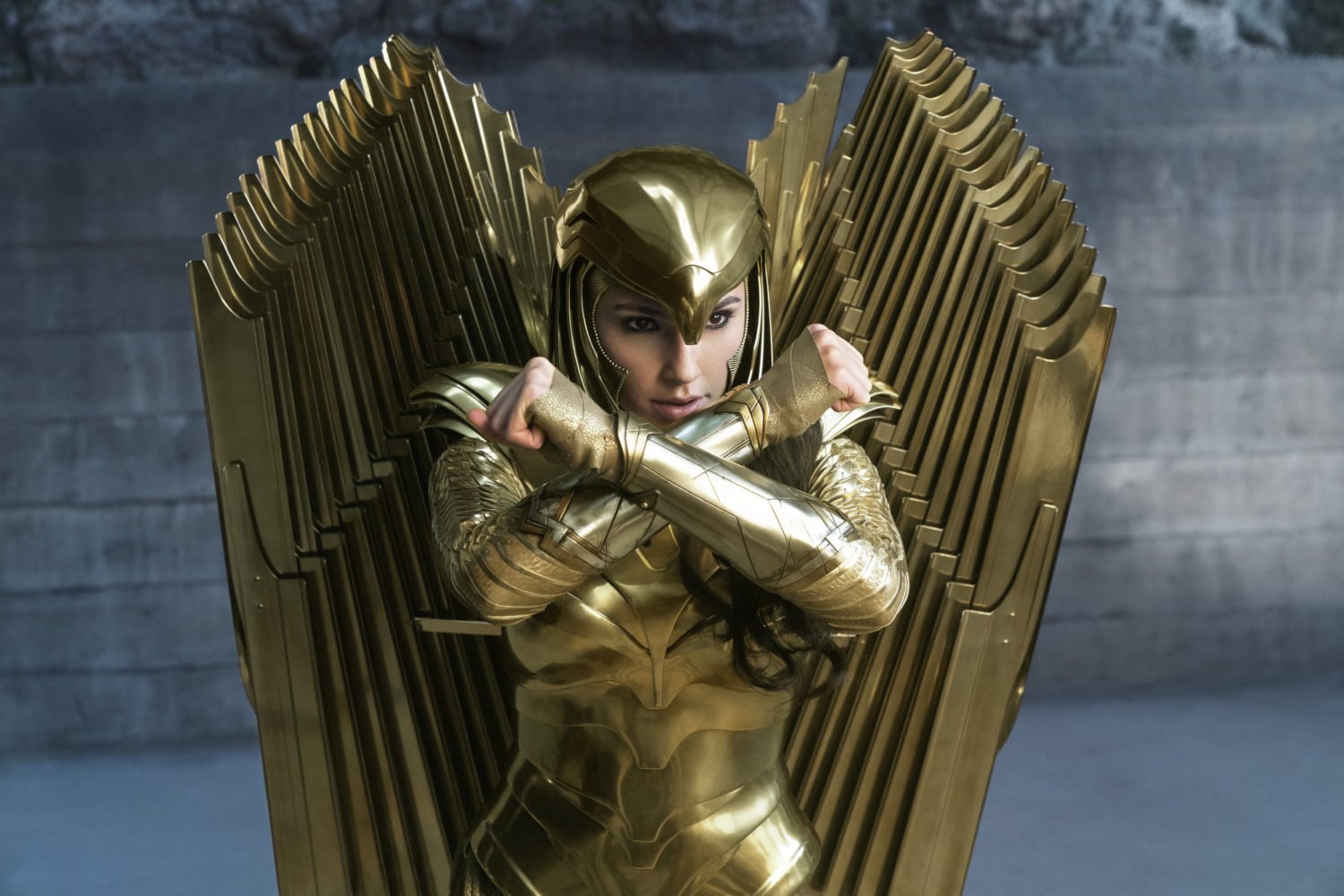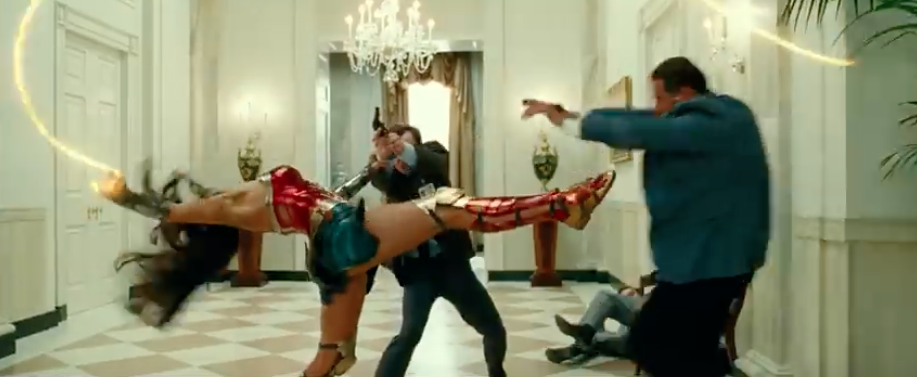Wonder Woman 1984 became available for purchase on Blu-Ray/DVD and digital late last month. That presented Washingtonian with an opportunity to revisit a question the film’s pandemic-battered release schedule denied us: No, not what happened to the guy whose body Chris Pine inhabited in the movie—seriously, did he die?—but what it was like to shoot major parts of the movie in Washington, DC.
The District, with its many jurisdictions and police forces, is famously a trying place to film, but Wonder Woman 1984 made a valiant effort to re-create the feel of the area in the ’80s—even re-creating Commander Salamander in Georgetown and Landmark Mall in Alexandria.
Director of photography Matthew Jensen had a leg up on making the Washington of today look like the Washington of the Reagan era. The cinematographer, who’s also worked on Game of Thrones and Fantastic Four among other productions, grew up in Alexandria and even studied filmmaking at the Smithsonian as a teen. We spoke via Zoom.

Washingtonian: What do filmmakers tend to get wrong about filming in Washington?
Matthew Jensen: It’s interesting because [director] Patty [Jenkins] also spent quite a bit of time in DC. [Jenkins lived in the Washington area in the late ’80s.] She knew a lot of the places that she could shoot. The two of us together had a history and could talk about it. Frankly, a lot of it is logistics, because it is so notoriously difficult to shoot in DC. You can’t get the kind of access that you need to really control your environment in the way that a film needs. And so I think that a lot of productions opt for the standard, establishing shot, and then go somewhere else. House of Cards being a perfect example.
Right.
They shot up in Baltimore, I guess, because it was easier for them. But we were really lucky. The mayor was a big fan of the first Wonder Woman, and we got a lot of cooperation, and the city really opened up to us. That’s not to say that we didn’t run into logistical hurdles—we did. But for the most part, we were able to really work with them because we were so keen on shooting in certain environments.
Such as?
You know, the Lincoln Memorial, that whole sequence. Shooting in the Metro was also another one that was just logistically difficult. And you know, you understand, because you don’t want people’s lives to be that inconvenienced, and having a film crew do what it needs to do is incredibly inconvenient. Patty was pretty dogged about wanting to shoot in DC and maximize our time there. She didn’t give up on things that were difficult, and we as a crew just kind of made it work.
When you were growing up, did you ever go to Commander Salamander or hang out in Georgetown or skateboard at Freedom Plaza?
Well, funny enough, I went to middle school in Georgetown at Holy Trinity. So Commander Salamander was right down the street. I’ve told this story before, but all the cool girls who I had such a crush on were always going to Commander Salamander to get sunglasses and things like that. It was always this kind of unattainable place of, you know, of being hip and cool. I found that just through muscle memory, I was able to navigate that whole area of Georgetown really well again. It hasn’t changed that much.

I also loved seeing Landmark Mall back in action. It was also nice to see those apartment buildings in the background when they move outside the mall. That dense inner suburban landscape is as much a part of the Washington area as all the marble that we usually see on film.
I’m glad we got to shoot in Northern Virginia. I was really happy to lend an eye to some of that. Our production designer, who is amazingly talented, is French. And then our entire art directing team is from England. So they didn’t kind of know the ins and outs of DC, and Patti and I were kind of keen to tell them to look in certain areas. But I think because they were outsiders, they were able to see the kind of things that you’re talking about. I remember them saying that they were very amazed at DC and its architecture and how it was laid out. And they were taken aback by how beautiful it was.
Are there any places in this area that you would really love to film that you haven’t gotten a chance to yet?
We did a little bit of work right above the canal. I remember taking a boat tour on one of the canal boats that was towed by a horse or a donkey or something like that. And I’ve always wanted to explore all those canal paths and in Rock Creek Park. That’s kind of supposed to be where Kristen Wiig gets attacked in the movie. Ultimately, schedule and financing drove us back to London to shoot that scene. So that’s in Hyde Park, in London.
I have very fond memories of Northern Virginia, of being on the other side of the Potomac and looking across into the District. And those kinds of views I would love to explore, that subtle difference when you move away from the District to Northern Virginia, there’s just this change in speed and energy. I’ve always wanted to see if I could do a film that explored that.
How is the light here to work with? Beyond the logistical problems, is this an easy place to film?
No, it is not by any means, particularly in the summer. The weather is so unpredictable. So when we were shooting the Lincoln Memorial, Washington Monument sequence with Chris and Gal, we got the big wide shot off, right at twilight when we wanted to shoot it. Then a torrential downpour happened, with lightning and all sorts of things. We had to clear out of there and wait the storm out. We have very strict safety protocols when it comes to lightning. Then even though the storm passed, there are certain markers, like a half an hour from the last lightning flash. So we lost hours, and then we ended up having to kind of hurry and beat the sunrise to get that sequence shot. In a couple of shots looking back at the Lincoln Memorial, you can see the sky is changing.
We ran into it again in the mall. I was still very daylight dependent in the mall, because it was surrounded by so many windows. So I had to diffuse all the windows, just in order to preserve continuity, because the sun would have been changing on me from shot to shot. And I still found, even by completely softening the light, that my light levels in the mall would go up and down because of the clouds, because of storms rolling in, because of fronts rolling out then getting full sun. I was constantly monitoring my weather apps. The ambient level would suddenly just drop. And I’d have to turn out lights and then rebalance everything. So you know, it was tricky.
We had a situation where we were shooting one of our big stunts, and I was on a very wide lens that was really featuring most of the mall for the first time. It was an elaborate stunt where Wonder Woman jumps over the railing and then swings. We did that all live. None of that is digital. Everybody’s in harnesses and on wires and things like that. So it was an elaborate thing to set up and we had a storm for most of the day. And I didn’t have enough light to shoot in there. So we would set up for the shot, and I would look around and look at my light meter and it was very dark. And so I would say to the assistant director, “I can’t shoot now, can’t shoot now,” and we kept playing this game all day. And finally we were able to coordinate on our apps that at 3 PM the storm was going to break a little bit and we were going to get a little sun, and we had about a half-hour window to get the shot. It worked out, but I had things like that all all throughout the shoot.
Listening to you, I’m kind of amazed that anything has ever been filmed here. I can see why people go to Vancouver or Charlotte.
Right? Well, I mean, it’s why everybody moved out to Southern California in the first place.

Does all the moisture in the air here affect the light?
Yeah. Which I love; it always looks spectacular at late day and you know, it’s a little diffuse, and it’s a little softer. And sometimes you get great streaks of light between the trees and things. So it’s all very picturesque. I loved shooting in DC, don’t get me wrong. It was a thrill to be able to do it, and to be able to do it in the way that we did, with as much cooperation.
It’s funny or ironic now, or sad or tragic, but when we were shooting that riot scene, and we closed down Pennsylvania, and the capital is in the background. And I guess prescient in a way that we didn’t really understand. Normally what would happen is that you would film that on a backlot, and you’d re-create, you know, two blocks and put up a whole bunch of blue screens on either end, and that would all be extended digitally. But we were able to do it there and everything that you saw was actually in DC, and we were very proud of that.
This interview has been condensed and very lightly edited.



















